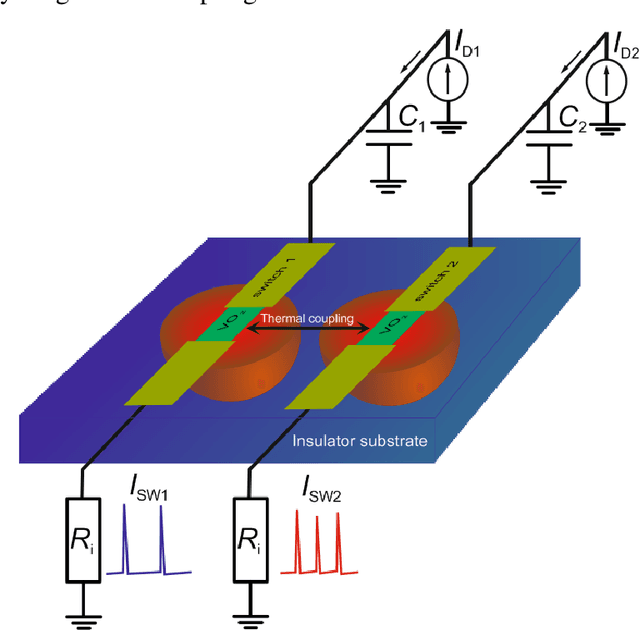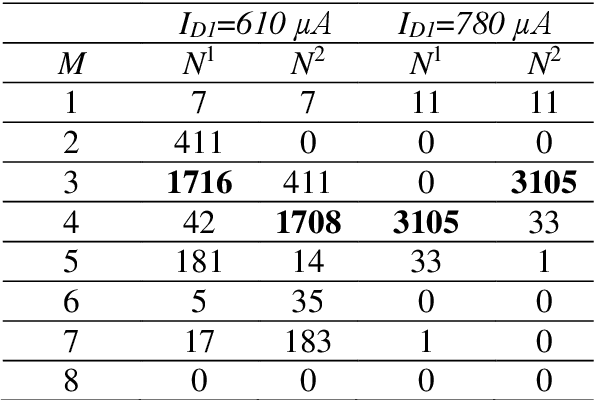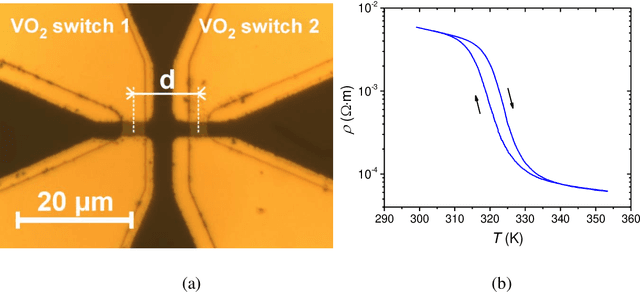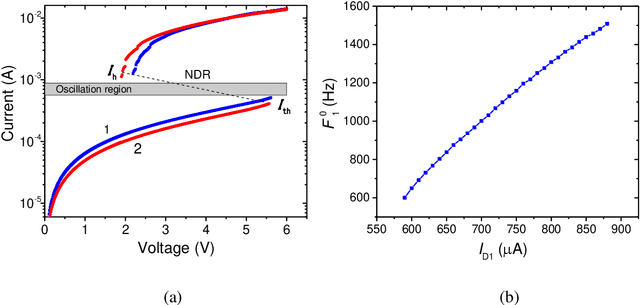Thermal coupling and effect of subharmonic synchronization in a system of two VO2 based oscillators
Paper and Code
Jan 06, 2020



We explore a prototype of an oscillatory neural network (ONN) based on vanadium dioxide switching devices. The model system under study represents two oscillators based on thermally coupled VO2 switches. Numerical simulation shows that the effective action radius RTC of coupling depends both on the total energy released during switching and on the average power. It is experimentally and numerically proved that the temperature change dT commences almost synchronously with the released power peak and T-coupling reveals itself up to a frequency of about 10 kHz. For the studied switching structure configuration, the RTC value varies over a wide range from 4 to 45 mkm, depending on the external circuit capacitance C and resistance Ri, but the variation of Ri is more promising from the practical viewpoint. In the case of a "weak" coupling, synchronization is accompanied by attraction effect and decrease of the main spectra harmonics width. In the case of a "strong" coupling, the number of effects increases, synchronization can occur on subharmonics resulting in multilevel stable synchronization of two oscillators. An advanced algorithm for synchronization efficiency and subharmonic ratio calculation is proposed. It is shown that of the two oscillators the leading one is that with a higher main frequency, and, in addition, the frequency stabilization effect is observed. Also, in the case of a strong thermal coupling, the limit of the supply current parameters, for which the oscillations exist, expands by ~ 10 %. The obtained results have a universal character and open up a new kind of coupling in ONNs, namely, T-coupling, which allows for easy transition from 2D to 3D integration. The effect of subharmonic synchronization hold promise for application in classification and pattern recognition.
 Add to Chrome
Add to Chrome Add to Firefox
Add to Firefox Add to Edge
Add to Edge